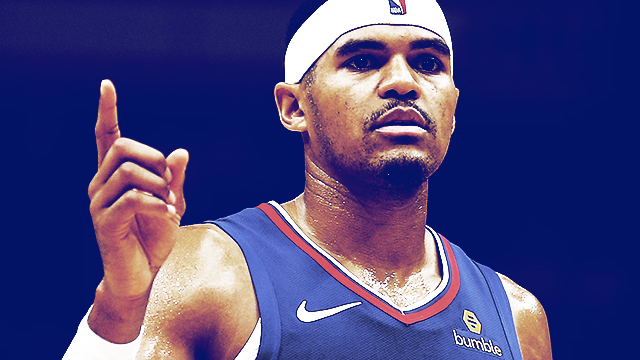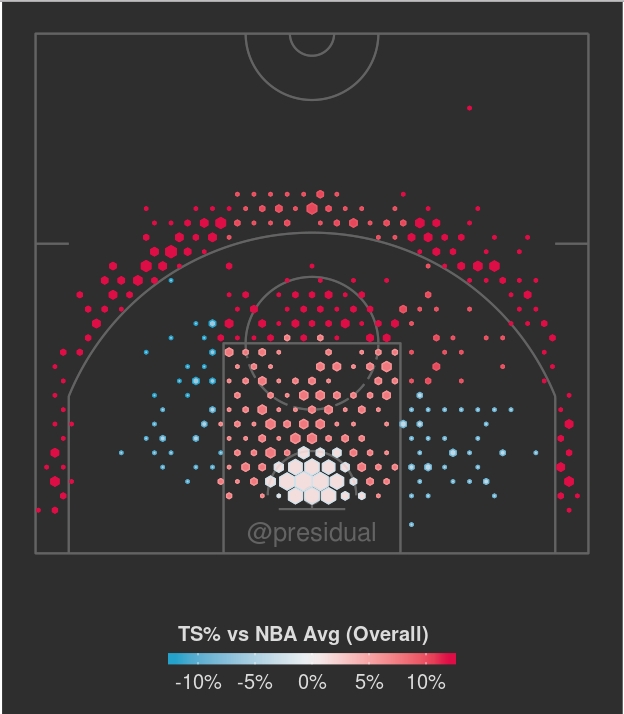
The Philadelphia 76ers made another blockbuster trade in the early hours of Wednesday morning, acquiring Tobias Harris, Boban Marjanovic, and Mike Scott from the Los Angeles Clippers for mostly future assets. It signals that the Sixers believe the East is there for the taking, and they are making their play.
Harris is a comfortable fit in the Philadelphia starting lineup. He should, upon joining the team, immediately slot in at power forward, a more natural fit for him after playing at the three for the Clippers most of the year. At 6’9, he is a little undersized to handle some fours, but that shouldn’t be much of an issue in the Eastern Conference unless the Sixers ask him to guard Giannis Antetokounmpo. He’s not incredibly quick laterally, but he rebounds the ball well and is a smart positional defender. Most likely, Philadelphia isn’t interested in Harris for his defensive ability.
The reason Harris is now on the Sixers is to juice up their offense. He will replace Wilson Chandler, who was sent to Los Angeles in the deal. Chandler was a prototypical stretch four in Philadelphia, mostly a catch-and-shoot specialist. He took 68.6 percent of his shots after no dribbles and made 47.5 percent of his wide-open threes, which are classified as triples attempted with the closest defender more than six feet away.
That spacing was important for a Sixers team that has three stars who like to do their work in the paint. However, Chandler offered little-to-no ability to handle the ball beyond shooting. He could finish plays, but didn’t really possess the ability to start them. Despite ranking in the 13th percentile of usage rate, he committed more turnovers than 90 percent of forwards, per Cleaning the Glass. In that respect, Harris is an instant upgrade.
Harris has been the secondary playmaker in many Clippers lineups this season, creating offense for himself and his teammates. Despite getting called for a few too many offensive fouls driving into the lane, Harris has a fairly low turnover rate and has improved his drive-and-kick game. Those skills won’t be as useful in Philadelphia, where he will probably be asked to space the floor and do less ball-handling than he did in Los Angeles. However, the threat of making plays off the dribble will be new to the Sixers at that position.
When it comes to spacing the floor, the area where Harris very well could end up having his biggest impact in Philadelphia, the former Clipper has been a outstanding. Harris has hit 43 percent of his threes overall prior to the trade despite having to create a majority of his looks. Remarkably, Harris shoots 58.3 percent from beyond the arc when he’s had the ball for six or more seconds. He hasn’t taken as many threes as Philadelphia would like him to (only 30 percent of his total shot volume), but when he launches, he’s been incredibly accurate. Just check out this shot chart from Positive Residual.

Currently, Harris is making 40.8 percent of his catch-and-shoot threes and 44.5 percent of his open threes. Those are good numbers already, and the Sixers will hope those figures creep upward as Harris gets a more steady diet of those kinds of shots.
Harris can also handle a greater workload than the man he’s replacing. Chandler played 26.4 minutes per game in Philadelphia, and Harris has been playing nearly 34.6 for the Clippers. Considering the Sixers’ depth issues, those extra eight minutes could go a long way, especially because Philadelphia lost Mike Muscala in this deal as well.
Mike Scott could also help address those depth problems. He was mostly a one-trick pony in Los Angeles, taking over half of his shots from distance. Scott hasn’t been consistent hitting those jumpers — he went all of December shooting 31 percent from the field — but he has perked up recently, hitting 11 of his last 18 threes since returning to the lineup after a couple of DNP-CDs. The veteran forward still has at least a small amount of gravity and can eat up minutes without Brett Brown worrying that he’ll make crucial mistakes.
The last piece of this deal for the Sixers doesn’t have the most clear fit, but Boban Marjanovic has spent his entire NBA career as a coaching conundrum. Doc Rivers deployed Marjanovic in spot minutes, sometimes against young bigs who weren’t used to the physicality of the league, mostly against centers who were loath to pick-and-pop. Incidentally, Marjanovic had one of his finest games of the season against Joel Embiid back in November.
With Embiid on the team, Philadelphia already has its domineering big in the paint, and Marjanovic seems to have less value. The good news is the Sixers could use some reinforcements at the 5 behind Embiid, and as Marjanovic has shown throughout his career, he’s effective in limited minutes. Plus it’s fun to consider that the Clippers wanted to do right by Harris by trading him with his best friend.
Whether the Sixers surrendered too much to acquire Tobias Harris and Co. is an open question, considering all three players are impending free agents, even if Philly reportedly would like to bring Harris back. However, if we’re only looking at this season, Harris should play a major role in what the Sixers hope is a lengthy playoff run.






